of smartagrihubs
The magnitude
155+
Digital Inovation Hubs
9
Regional
Clusters
7
Sectors
28
Flagship
Innovation
Experiments
Flagship Innovation Experiments
In the spotlight
Online Decision Support System Fertiliser Optimisation
Creating an online Decision Support system for farmers which processes data from sensors and integrates image analyses to improve both yield quantity and quality.
north east europe
Smart Groundwater and Weather Sensors
Developing a web-based system for agrometeorological and groundwater measurements to ease the transfer of information between different farm applications and smoothen the uptake of precision agriculture.
north-east europe
Data-Driven Vineyard Precision Management
Promoting the uptake of precision strategies in viticulture by developing an application for growers which provides decision-making support for routine operations based on sensors attached to machinery.
italy & malta
Deep Learning & Hyperspectral Imaging (AI4AGRICULTURE)
Gathering data on crop status by using deep-learning analyses of hyperspectral imaging to improve spray operations.
north-west europe
Online Decision Support System Fertiliser Optimisation
Sensors gather data on the farm, but it needs to be converted into actionable information for the farmer. The objective of this Innovation Experiment is to process data that are currently not well adapted by the end-user or farmer. The adoption of precision agriculture technologies is relatively low among medium and small farms across Europe.
The solution developed to address this challenge is a web based DSS platform. This platform supports "low tech" precision agricultural solutions which enable the use of open public data on agri-food sector. By using our two pilot modules the farmer will reduce the cost of sampling analysis and soil mapping, reduce the use of nitrogen fertilizers, and indirectly reduce the potential negative impact of fertilization on the natural environment. Two pilot modules are used to optimize soil sampling and to optimize mineral N fertilization, i.e., variable rate application (VRT). A variable N application map can be created based on satellite data. You choose the field, the crop, the fertilizer, and the platform prepare an application map for you, ready to send to your spreader. This can be of great help for small farmers.
The platform is open to other providers of related PA technologies, which encourages collaboration.
This experiment is supported by a two Competence Centres (CC) that are part of DIH AgroPoland: Poznań University of Life Sciences (PULS) and Poznań Supercomputing and Networking Center (PSNC). PULS is a provider of demonstration farms and expert in the field of precision farming technologies. PSNC supports FIE#17 in adapting the implemented services to the rules of the national agricultural data management framework.
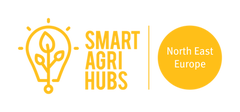
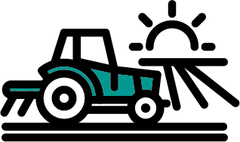
Regional Cluster
North East Europe
Sector
Arable
End user
Farmers from small to medium size properties
Product
An online Decision Support system that processed data from sensors and integrates image-analysis to improve yield quality as well as quantity.
Contact
Tomasz Wojciechowski
tomasz.wojciechowski@up.poznan.pl
Partners
AgriWatch BV
AgroPoland
Poznań University of Life Sciences (PULS) - Department of Biosystems Engineering
Poznań Supercomputing and Networking Center (PSNC)
Something funny
We're not funny like Tik-Tok, but still interesting like Google Maps.
Smart Groundwater and Weather Sensors
Currently, farmers have access to many applications to collect and monitor data from their fields. They can access to current insights on precise climate conditions and vegetation status based on satellite data, observations from in-situ sensors and monitored groundwater wells and other spatial data to plan field interventions and support data-driven decisions. However, these sets of data are coming from a fragmented environment of applications.
The FIE20 is developing a web-based application to let farmers connect and visualize different datasets in a map view. The solution will compile date from different sensors on the map together with other thematic datasets (water bodies, land value, soil class, protected areas, vegetation indices, etc.) and it will also display weather data and forecast at a specific location. The web-based system will then support farmers in their decision-making process by providing detailed analysis results (suggested time for spraying, sowing, soil trafficability, frost risk, etc.).
The web-based application will also create fertilisation maps based on yield productivity zones. Such maps will ensure responsible agriculture practices in the application fertiliser, the quantity of applied fertilisers will be reduced to the crops needs, based on vegetation indices changes. In addition, the protection zones analytics will help to avoid application of fertilisers in the buffer zones near the water.
A typical day of the project looks like a design, development, and testing cycle. The technical team evaluates results of testing from previous days, discusses options and ways to improve the application components. The developers are incorporating comments and suggestions and at the end of the day, they forward the latest version of the application or functions to the testing users. The feedback view of tester and end-users from the pilot farm is very valuable for the development.
Planning of field interventions and support of decision-making process is important for farmers and agronomists. The technical solution of the FIE20 provides data, information as well as analytical functions for support of these decisions. Information is provided in explanatory form of charts, diagrams, and maps. The FIE20 receives great support in dissemination from ZSA DIH. The new FIE20 system was presented in many conferences, seminars, workshops, and meetings in Latvia and in the international events. WIRELESSINFO DIH and CC was mainly oriented on processing of EO data and assistance of analytical algorithms implementation.

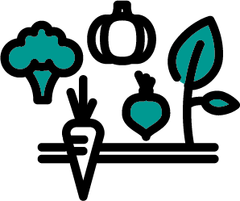
Regional Cluster
North East Europe
Sector
Vegetable and Arable
End user
Farmers and agronomists
Product
We will produce a user-friendly support concept for digital upgrading and a front-end service application for PigScale. Also, we will make an evaluation report with identified uptakes and barriers. Automatic weighing of pigs will provide a better profitability, and increased animal welfare..
Contact
MS Inga Berzina
inga@zemniekusaeima.lv
https://groundwater.smartagro.lv/
https://www.facebook.com/zemnieku.saeima/
https://www.twitter.com/zemnieku.saeima/
Partners
Union “Farmers’ Parliament” (ZSA)
WIRELESSINFO
Something funny
A funny contribution to overall experience of application development - it is important to check location of satellite data scenes. Processing of analyses of fields 15 kilometres away cannot match with validation data of pilot fields!
Data-Driven Vineyard Precision Management
The FIE 25 focused on solving two key issues in the creation of vigor and thermal maps in the vineyard. The first one concerns the limitations that satellites have in acquiring images: satellites sometimes do not have sufficient resolution to guarantee good effectiveness. The second issue is that today higher resolution maps are often provided by drones, but this technique is not quite well perceived by farmers. They would prefer more autonomous and flexible solutions.
The FIE 25 developed a simple sensor, called ECS, which is mounted in front of the tractor, and is able to provide acquisition of vigor and thermal status of the canopies during routine mechanical operations (i.e., tillage, spraying, etc.). In less than 1 hour, data post-processing is completed and prescription maps for variable rate applications as well as early diagnosis for water stress become readily available!
Vineyards in Italy are often located in hilly areas and are not irrigated. This implies that they are more prone to non-uniform vigor and subject to a different water status. Under such conditions, ECS can furnish to the vineyard manager a clear and immediate picture of the extent of such heterogeneity allowing a better planning of pre-planting operations as well as of any site-specific interventions.
The sensor is mounted in front of the tractor and has two “eyes” that can “see and read” the temperature and the size of the canopies while the tractor is moving. These numbers are then rapidly processed and uploaded in almost real time on a smartphone under colour maps format: for instance, blue/red to indicate cooler or warmer canopy areas or green/brown to show high or low vigor spots.
A typical project day is preceded by an organizational check between Casella Company and farmers to prepare the demonstration activity in the field with the ECS sensor application. Then, once in the vineyard, the experimental survey is performed with farmers, CC and technology provider directly monitoring the progress of the activity on the tractor where the sensor makes its readings. At the end of the survey, data are immediately extrapolated, and the correctness of the survey is checked. Finally, preliminary maps are discussed with the farmer and the technology provider for first glance impressions and adherence to empirical assessment.
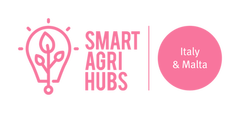

Regional Cluster
Italy & Malta
Sector
Fruit
End user
Farmers and agronomists
Product
The product will be the multi parametric ECS (Enhanced Canopy Sensor).
Contact
Stefano Poni
stefano.poni@unicatt.it
https://docenti.unicatt.it/ppd2/it/docenti/13833/stefano-poni/profilo
https://www.facebook.com/stefano.poni/
Partners
UCSC – CRAST
Something funny
That day we panicked because we saw that the sensor wasn't working, and we thought it was broken. Actually, it was just off. However, after two weeks it really broke.
Deep Learning & Hyperspectral Imaging (AI4AGRICULTURE)
Every year crops suffer from weeds and diseases in the field. However, the weed and disease pressure changes each season depending on various factors (i.e. weather conditions, soil management, etc.). Spraying the right amount of Plant Protection Products (PPP) at the right time and only on the critical areas within the field requires extensive information on the status of the crop. Without a specified spray task map, the farmers would apply the standard spraying regimes to protect the yield, ending in using more PPP than needed.
Imagine that the farmer has a specific and recent task map available which indicates the weed and disease pressure over the field. Based on this information the farmer can decide objectively if a second spray is needed and/or if only part of the field needs to be sprayed. With the technology we are developing in our FIE, such maps can be created!
First, a drone mounted with high resolution RGB and/or infrared camera flies under the supervision of a pilot over the field in a predetermined pattern. The image data collected are then sent to a computer to be analysed and the images will be processed via pre-trained Deep Learning models, which will identify the weeds and disease pressure. In a final step a task map is created and transferred to a spraying machine, enabling it to spray only where it is necessary. With this technology, we can support the farmers in making more objective choices while using Plant Protection Products.
This project is mainly seasonal, we collect data in the fields during the crop season and outside the season we manage and label the data, and we use it to retrain the system to better detect weeds and disease. Even though the Agri machinery suppliers, especially spraying machinery, could end up being clients of these products & services, the principal end-users are the farmers trying to reduce their reliance on PPP. And we are careful to rely on their experience to develop our technology. We spend a lot of time interviewing farmers to gain first-hand knowledge from them, both in identifying the plant species growing in their fields, and in how they should be managed.
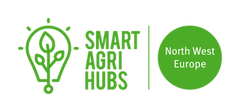

Regional Cluster
North-West Europe
Sector
Arable
End user
Arable farmers and potentially agricultural equipment manufacturers
Product
This FIE will deliver: a collection of arable crop images via drone - and spraying boom-mounted cameras, a weed and disease detection algorithms and the method to create & manage those, and the creation of a task map for the use of PPP (which type, how much to use and where). The three components will help to better support farmers decisions management.
Contact
Rob Gielen
Rob.Gielen@Robovision.ai
www.Robovision.ai
Partners
ILVO
UGent
Smart Digital Farming
Flanders' FOOD
Exobotic Technologies
Something funny
One participating farmer is not growing any crops targeted by this project. So, we created a small side project where we want to detect thistles in grass/flower fields. We helped with collecting the data and provided him access to the labelling and training platform so he can create his own model
